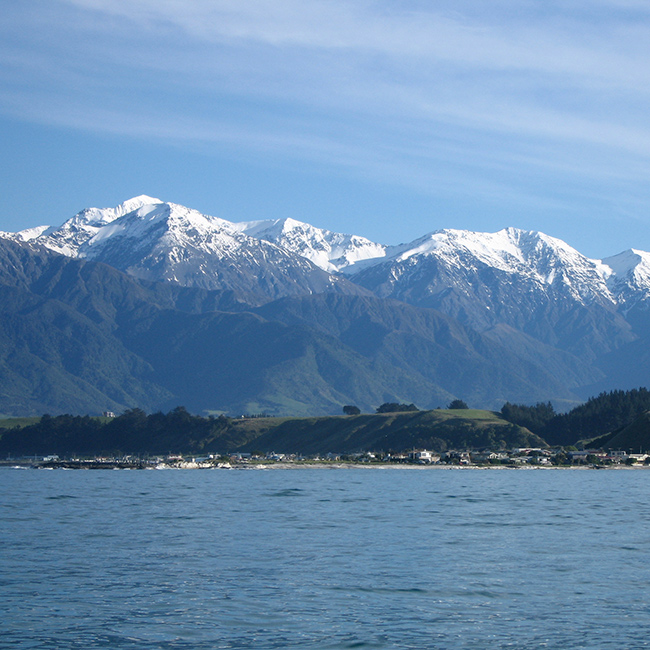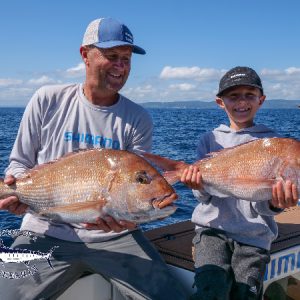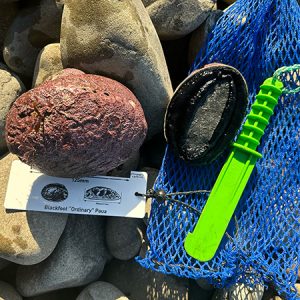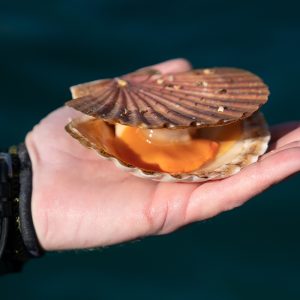Blue cod isn’t just another fish. It’s the fish of the South, as iconic to the lower half of the country as snapper is to the north. It’s the one families plan holidays around, the one sizzling in the pan at the crib, blue cod are embedded in childhood memories of casting a line off the rocks with your old man.
Blue cod were once abundant, dependable, and central to coastal life. Now, after decades of limp oversight, commercial overreach (surprise, surprise), and political hand-washing, our blue cod populations are in crisis. And, true to form, it’s recreational fishers – the mums, dads, grandparents, and kids just trying to take home a feed – who are being punished, while the trawl doors keep swinging.
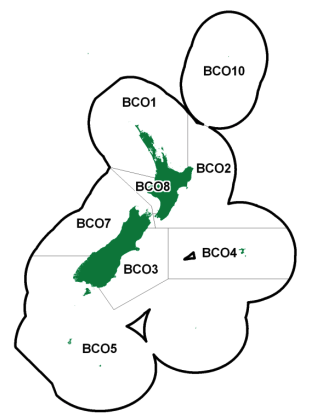 BCO 3 – East Coast South Island
BCO 3 – East Coast South Island
This fishery has been mismanaged for so long that it’s hard to know where to start. Let’s begin with – The Total Allowable Commercial Catch (TACC) has been exceeded in 19 of the past 20 years. That’s not an oops – that’s systemic failure. A target pot fishery should not be overfished year after year. Meanwhile, in many areas recreational fishers have gone from a 30-fish daily limit down to 2!
Worse still, 20% of commercial catch in BCO 3 comes from bottom trawling, often just behind the surf break. Even worse still, these guys aren’t even targeting blue cod – they’re scooping up everything in their path and taking the cod that happen to be there.
And now, Fisheries NZ is proposing to reduce the daily recreational limits between Taiaroa Head and Slope Point from 15 to 10 per person. Sure, there’s also a proposed commercial cut, but let’s be honest, Fisheries NZ have turned a blind eye for two decades before even considering constraining commercial pressure.
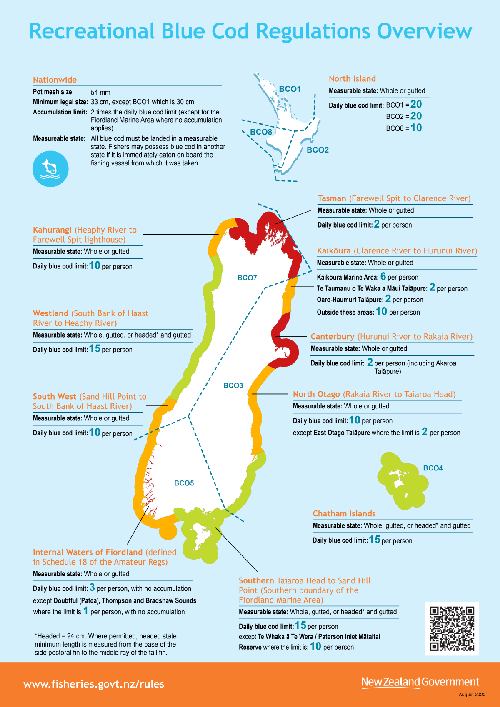
Recreational fishers have always stepped up when stocks are in trouble. But asking recreational to cop deeper cuts – again – just so commercial quotas don’t have to budge? That’s not sustainability. That’s exploitation wearing a green hat.
And then there’s the traffic light system specifying area-based daily bag limits. Designed with working group input, then quietly rewritten behind closed doors during COVID. What rolled out looked nothing like what was agreed. The result? A system that should’ve been collaborative for Canterbury fishers became another slap in the face from bureaucrats.
To add insult to injury, we’re flying blind. No one actually knows how this fishery is tracking, but officials have admitted that overfishing is 90% likely. Decisions are being made based on commercial fishing data yet somehow, recreational fishers are the ones carrying the burden.
BCO 5 – Southland & Foveaux Strait
Fishing the south coast is hard graft. The weather, the swell, next stop Auckland Islands – it’s not for the faint-hearted. So when you finally get out there, you’d hope for a fair chance at bringing home some fish for the family.
But Foveaux fisheries are in trouble. Overfishing is occurring, and the 2024 changes to catch limits haven’t significantly improved the outlook. Sure, it’s early days – but Fisheries NZ is already proposing more recreational cuts. Not because recreational fishers are to blame, but because officials don’t want to reduce commercial limits any further.
The Total Allowable Commercial Catch (TACC) was 800 tonnes but was reduced in 2014 to 580 tonnes.
In 2024, the overall recreational catch allowance was cut from 85 to 62 tonnes, and now we’re being told our daily limits need to shrink to match.
Let’s talk about “recreational” catch. Commercial operators are also legally allowed to land fish as recreational fishers – over the course of a year, this adds up to 22 tonnes of blue cod. That means 35% of the recreational allowance is being caught by commercial fishers! That’s not the family having a Sunday fry-up – that’s industrial-level extraction sneaking in the side door.
Sadly, when commercial catch drops in one area, they simply move on to the next. Otherwise known as “serial depletion”. It makes the data look stable, while the fish disappear under the radar.
Meanwhile, there’s no meaningful crackdown on the industrial-scale “amateur” catch being quietly siphoned away.
BCO 8 – West Coast Lower North Island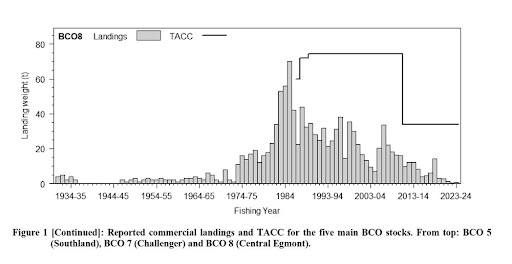
Let’s be blunt – this fishery is cooked.
The line graph above shows what the commercial industry is allowed to catch and the bar graph shows what they can physically catch. This is a classic case of overallocation. It would be farcical if the implications weren’t so terrifying.
Commercial landings have collapsed to less than 1 tonne a year, and even that’s just bycatch. Recreational fishers haven’t had more than a handful of cod on a good day for years. This fishery is more evidence that the Quota Management System has failed. It is not fit for purpose.
And still, no stock assessment. No rebuild plan. No admission by Fisheries New Zealand that this fishery might already be gone. What more can we say?
Now, Fisheries NZ is proposing to cut the recreational daily limit from 10 down to 2 or even 1. This despite the fact that commercial effort has never even been constrained. It’s a move that punishes Kiwis who are already catching next to nothing – just to prop up the illusion that the Quota Management System is doing something.
The dilemma is classic: if we agree to daily bag limit cuts, we know they’ll never come back. Commercial quotas? Those get reviewed and increased as soon as catch rates tick up. It’s a one-way valve. We’ve seen this movie before and there is no happy ending for the blue cod or New Zealanders who just want to feed their family.
Marlborough Sounds – Biology Breaking Down
The Sounds are a biological red flag. Cod populations here are now more than 70% male — in a species that needs a healthy mix. Needless to say, the whole reproductive process is going sideways.
This is a full-blown ecological warning siren. But again – nothing. No urgent reform. Just another worrying stat that gets filed away while the fishery continues to crumble.
Same Fish, Same Story
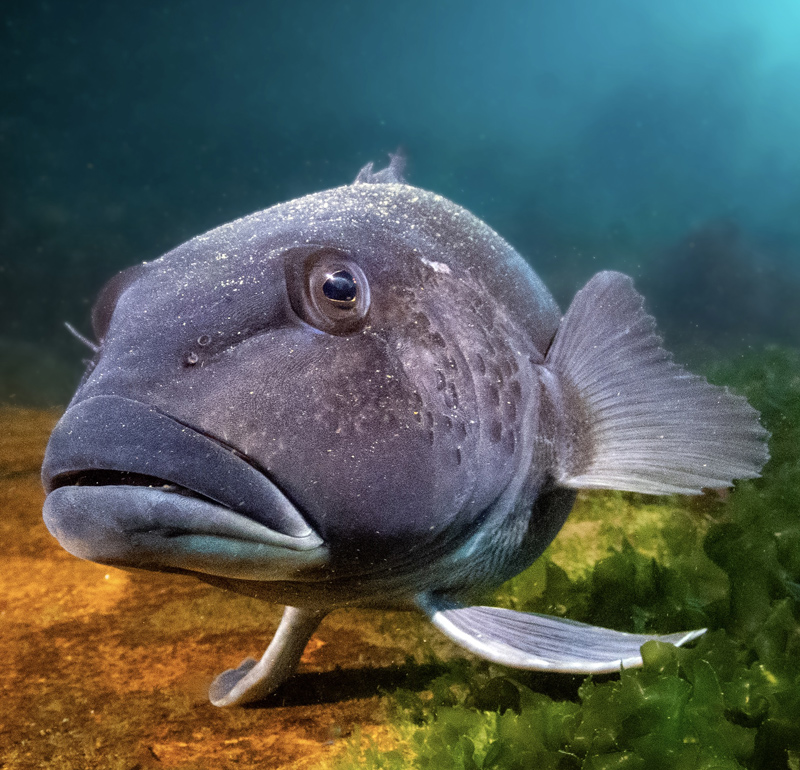
Every region has its own mess, but the themes are painfully familiar:
- Chronic overfishing, especially by commercial
- Not enough reliable stock assessments, just guesswork
- Recreational fishers getting hammered
- Closed-door decision-making that sidelines community input.
And now, signs are emerging that blue cod are changing biologically under stress. That’s the same shift seen in Baltic Sea cod before their collapse. Once that tipping point is reached, recovery becomes nearly impossible.
Where To From Here?
Blue cod isn’t just a fish in trouble – it’s proof that our fisheries management system is broken. A system that protects quota more than it protects fish. That cuts recreational access while letting commercial overcatch slide for decades. That forgets the people who actually care about the future of our fisheries – because they don’t have a fleet or a finance department.
This fishery should’ve been managed with care, precision, and local input. Instead, it’s been – as one fisher put it – “absolutely munted.”
We don’t need another working group or another hollow consultation process. We need a reset. A management system that’s built on solid science, shaped by local knowledge, and focused on the ecosystem as a whole, not just economics. We need to:
1. Shift the priority from exporting seafood to rebuilding our coastal fish populations.
- International best practice suggests restoring fish populations to a minimum of 50% of their original biomass. (In New Zealand, that would effectively double the number of fish in our water, increase biodiversity and resilience to adverse events).
- This would make selective harvest techniques more economically viable and meet the expectations of 78% of New Zealanders, who believe fish for local consumption should be prioritised.
2. Rebuilding begins by transitioning into more selective low-impact fishing methods.
- Under the Quota Management System (QMS), bottom trawling, dredging, and Danish seining, are legal.
- These fishing methods produce significant waste, they damage the seafloor and the creatures living on/in it, often leaving long-lasting impacts on the marine ecosystem.
- Fishers are inherently innovative. Resource fishers to develop new technologies and techniques that catch fish and have a lower environmental impact.
3. After 40 years the Quota Management System has failed to rebuild fish populations and make commercial fishing economically successful. We need to:
- Manage coastal fisheries differently from those in deep water. They have different stressors and stakeholders.
- Remove private property rights. These impede the government from developing a meaningful transition plan. The first step is to buy back quota at a fair price then reset with a license (resource rentals) based model. Using blue cod as an example, the fishery is cooked and the value of these assets is falling faster than the number of fish.
Until that happens, blue cod – the king of the South – remains a cautionary tale. And if we don’t act now, like the moa we’ll be explaining to our kids why there are no fish left in their favourite fishing spot, just stories about “what used to be like back in my day”.
Further Resources –
BCO 3 overcatch & management
https://www.nzsportfishing.co.nz/wp-content/uploads/2021/07/BCO3-submission-recreational-Jul21.pdf
https://www.nzsportfishing.co.nz/wp-content/uploads/2021/07/BCO3-proposals-FNZ-23-June-2021.pdf
Marlborough Sounds sex-ratio data (~75% male)
https://webstatic.niwa.co.nz/library/FAR2017-17.pdf
https://www.nzsportfishing.co.nz/wp-content/uploads/2024/12/Bluecod-MS-proposal-FNZ-Oct-2024.pdf
Stock declines & potting surveys
https://fs.fish.govt.nz/Doc/25291/08%20BCO%202022.pdf.ashx
BCO 8 collapse and recreational limits
https://www.nzsportfishing.co.nz/wp-content/uploads/2022/03/Proposed-technical-changes-joint-recreational-submission-Mar2022.pdf
Blue cod plenary reports
Fisheries New Zealand, Fisheries Assessment Plenary. Volume 1. BCO 3. May 2025.
Fisheries New Zealand, Fisheries Assessment Plenary. Volume 1. BCO 5. May 2025.
Fisheries New Zealand, Fisheries Assessment Plenary. Volume 1. BCO. May 2025.
